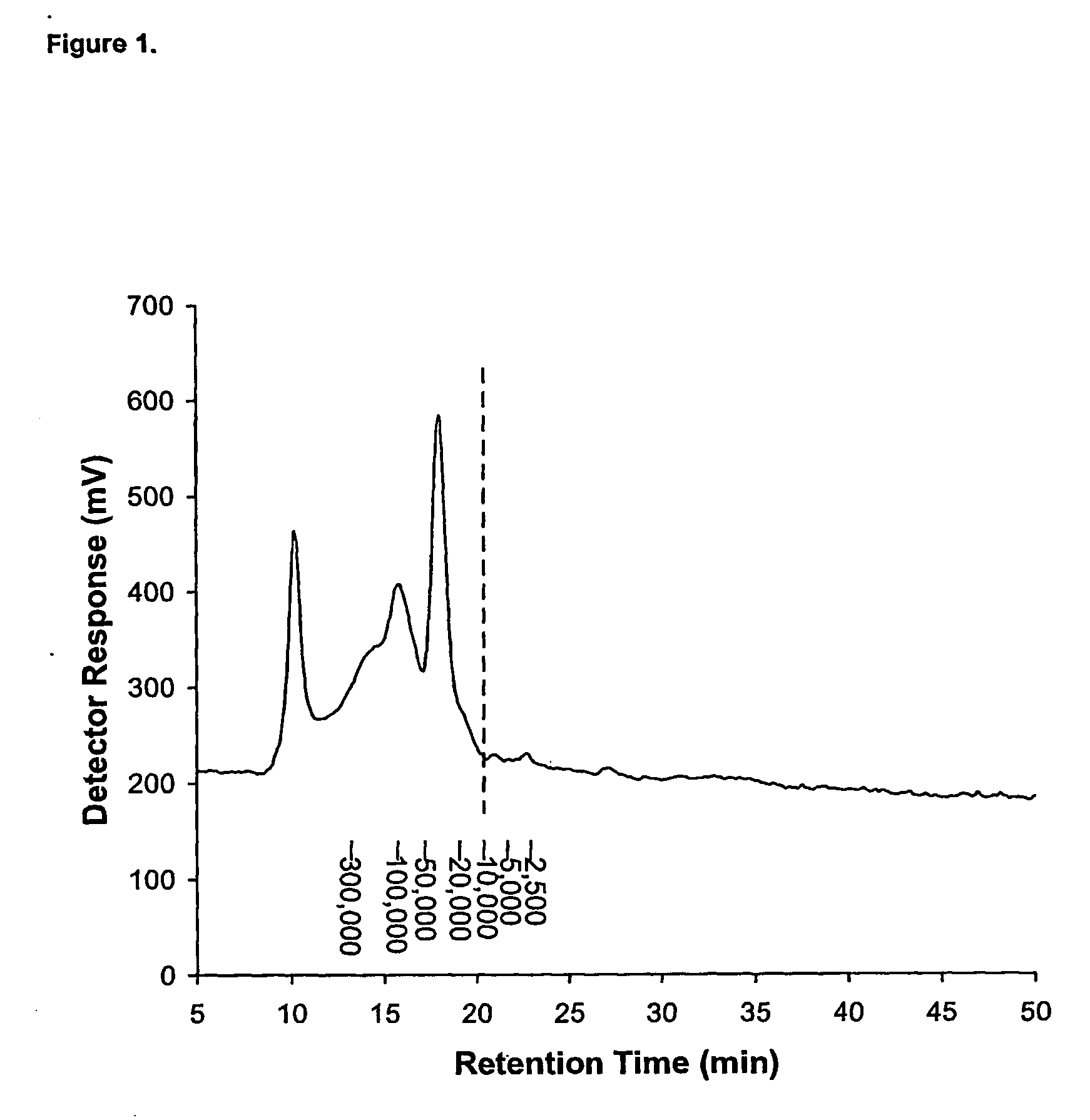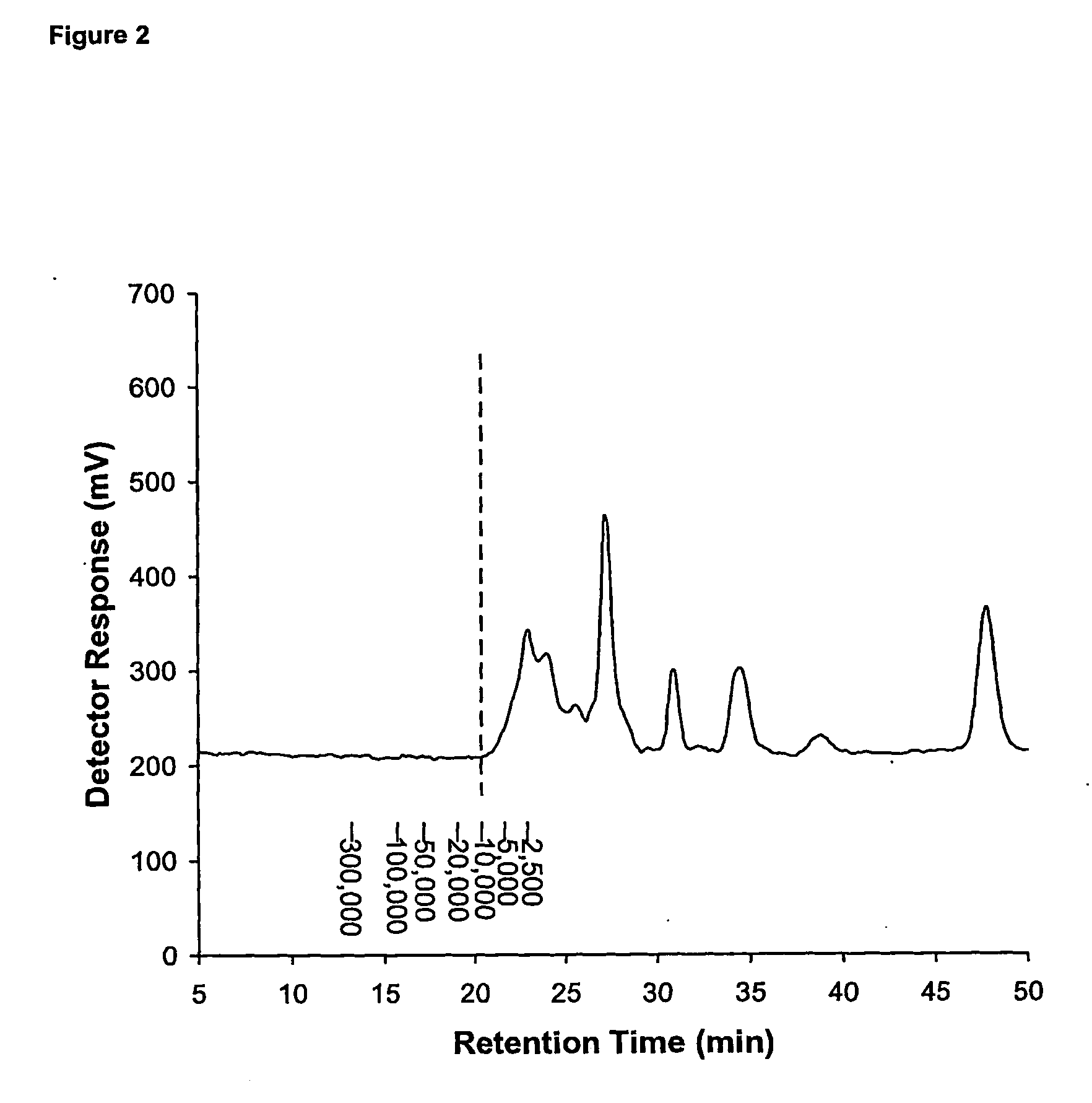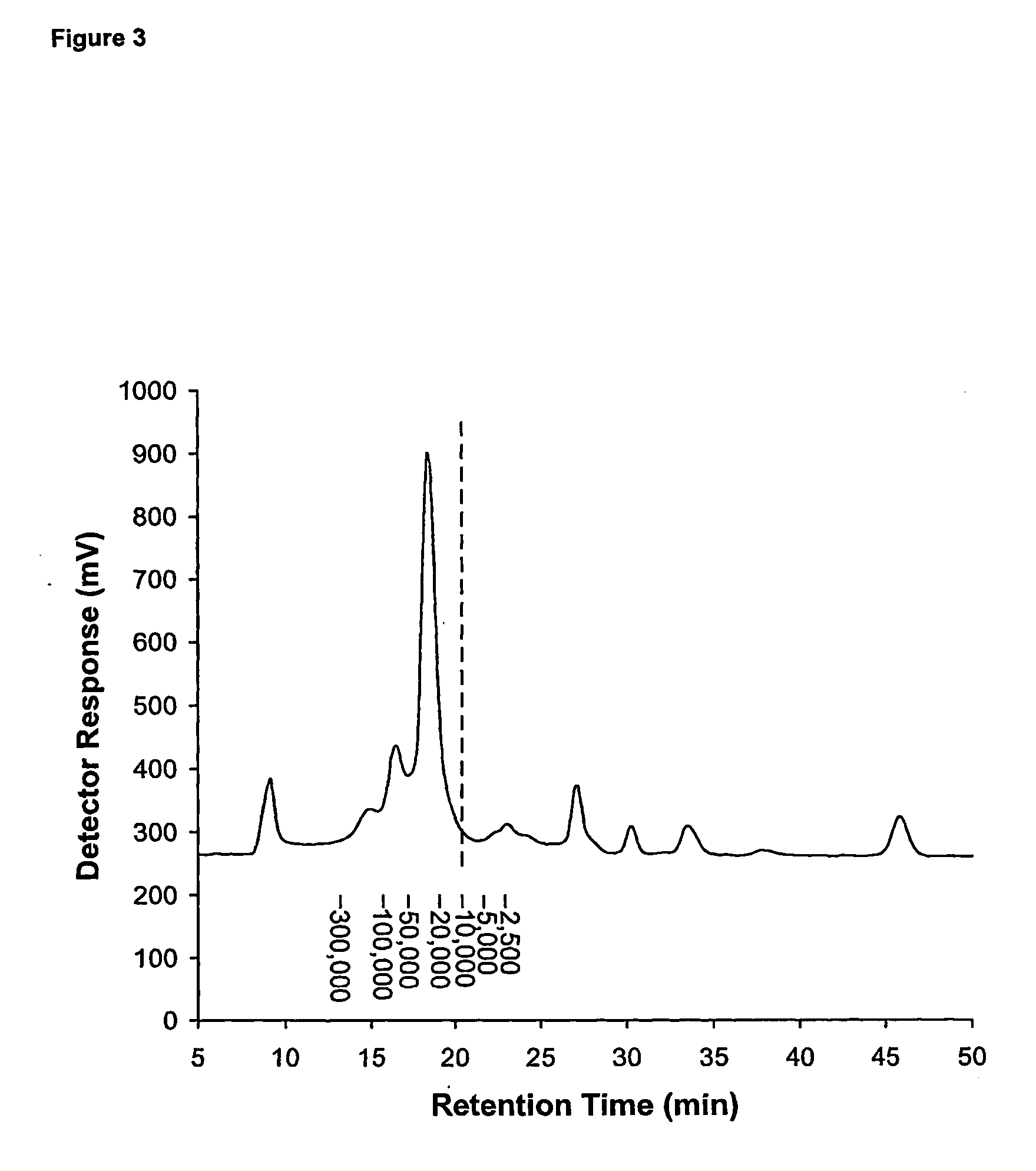Deer antler extract for promoting angiogenesis
a technology of angiogenesis and antler, which is applied in the field of angiogenesis extracts, can solve the problems of increasing the number of micro vessels in the treated wound, slow healing process, and paper that did not contain data showing actual angiogenic or wound healing activity, and achieves the effect of promoting angiogenesis and proliferating endothelial cells
- Summary
- Abstract
- Description
- Claims
- Application Information
AI Technical Summary
Benefits of technology
Problems solved by technology
Method used
Image
Examples
Embodiment Construction
[0080] Experimental
[0081] Methods
[0082] Collection of Tissue:
[0083] Deer velvet antlers were collected from 3-year-old red deer stags at 55-60 days of growth following casting of the previous antlers.
[0084] The velvet was removed according to the regulations laid down by Code of Recommendations and Minimum Standards for the Welfare of Deer during the Removal of Antlers, July 1992 (revised 1997), Ministry of Agriculture and Fisheries, Wellington, New Zealand.
[0085] The velvet was commercially processed by hot dipping or freeze-drying. Hot dipping is based on the traditional Chinese method, where sticks of antler are suspended from the base (i.e. tips downwards) and repeatedly dipped into almost boiling water for brief periods of time. After being dipped, they are allowed to cool before being dipped again. Dipping continues until clear plasma bubbles from the cut bases of the antlers. Antlers are then placed in a low humidity drier at approximately 15° C. for several weeks until ...
PUM
| Property | Measurement | Unit |
|---|---|---|
| molecular weights | aaaaa | aaaaa |
| temperature | aaaaa | aaaaa |
| temperature | aaaaa | aaaaa |
Abstract
Description
Claims
Application Information
 Login to View More
Login to View More - R&D
- Intellectual Property
- Life Sciences
- Materials
- Tech Scout
- Unparalleled Data Quality
- Higher Quality Content
- 60% Fewer Hallucinations
Browse by: Latest US Patents, China's latest patents, Technical Efficacy Thesaurus, Application Domain, Technology Topic, Popular Technical Reports.
© 2025 PatSnap. All rights reserved.Legal|Privacy policy|Modern Slavery Act Transparency Statement|Sitemap|About US| Contact US: help@patsnap.com



